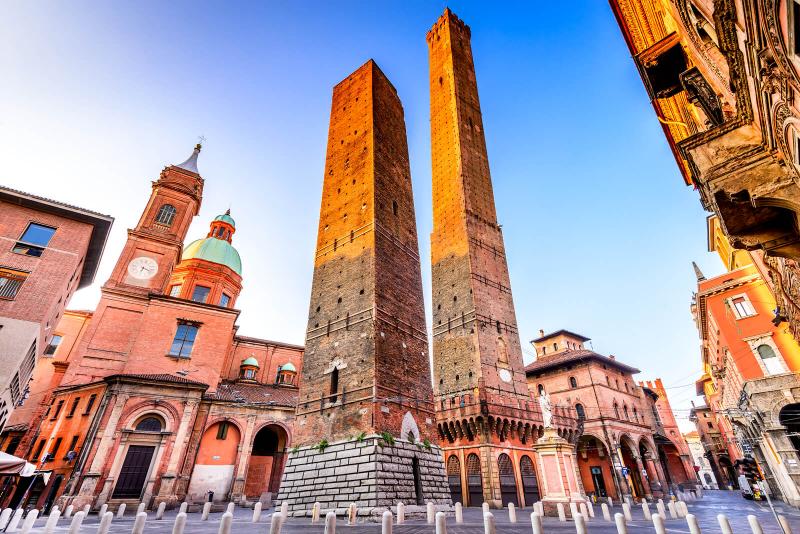Bologna, or ‘Moon City’
ITA:

Use player to listen to Italian version
by Silvia Donati
The Romans called Bologna (actually, Bononia, as it was known then) ‘Moon City’, because so much of it was built with a type of stone, selenite, that produces silver reflections similar to the moon’s; the stone itself, which is gypsum, is called ‘pietra di luna’ (moonstone), and is abundant in the hills that surround Bologna. In the dark especially, selenite shines, like the moon (selene in Greek).
Because it is sturdy yet easy to work, selenite was widely used in construction during Roman times and beyond. As the Roman empire began to decline and the Barbarians invaded the north of Italy, Bologna tried to defend itself building a new circle of walls between the 4th and 5th centuries that even today is known as ‘cerchia di selenite’, the selenite walls.
The portion of the city protected by the walls was much smaller in size than the current historical center, and even than the Roman city. Later, when these walls were demolished to build a larger circle of walls as the city expanded during the Middle Ages, selenite was re-used to build monuments and houses, churches, porticoes, and towers. If you observe carefully as you stroll the city, you’ll find selenite everywhere.
Bologna had more than 100 towers in the Middle Ages. The base of the towers were built with large blocks of selenite; the rest of the building was erected with gradually thinner and lighter walls. Go stand near the base of the Garisenda, which along with the Asinelli, forms the Two Towers, the city’s landmark (the Garisenda is the leaning one); you can clearly see the sparkling selenite. Now imagine what it must have looked like in the dark, when there was no electrical lighting, and selenite covered so many buildings. Moon city, indeed.
di Silvia Donati
I Romani soprannominarono Bologna (o, per meglio dire, Bononia, come si chiamava allora) "Città della Luna", perché gran parte di essa era stata costruita con un tipo di pietra, la selenite, che produce riflessi argentei simili a quelli della luna; la pietra stessa, che è gesso, è chiamata 'pietra di luna', e si trova in abbondanza nelle colline che circondano Bologna. Soprattutto al buio, la selenite luccica, come la luna (selene in greco).
Poiché è robusta e allo stesso tempo facile da lavorare, la selenite fu ampiamente utilizzata a Bologna per costruire edifici durante il periodo romano e oltre. Quando l'impero romano cominciò a declinare e i Barbari invasero il nord dell'Italia, Bologna tentò di difendersi costruendo una nuova cerchia di mura, tra il IV° e il V° secolo, che ancora oggi è conosciuta come "cerchia di selenite".
La parte della città protetta dalle mura era di dimensioni molto più ridotte rispetto all'attuale centro storico, e persino rispetto alla città romana. Più tardi, quando queste mura furono demolite per costruire una più ampia cerchia per fare spazio alla città che si espandeva durante il Medioevo, la selenite fu riutilizzata per costruire monumenti e case, chiese, portici e torri. Se osservi attentamente mentre cammini per la città, troverai la selenite ovunque.
Bologna aveva più di 100 torri nel Medioevo. La base delle torri veniva costruita con grandi blocchi di selenite; il resto dell'edificio veniva eretto con pareti gradualmente più sottili e più leggere. Avvicinati alla base della Garisenda, che insieme all’Asinelli, forma le Due Torri, il simbolo della città (la Garisenda è quella pendente); puoi vedere chiaramente la selenite che luccica. Ora immagina come doveva essere al buio, quando non c'era luce elettrica, e la selenite ricopriva tanti edifici. Città della luna, appunto.











